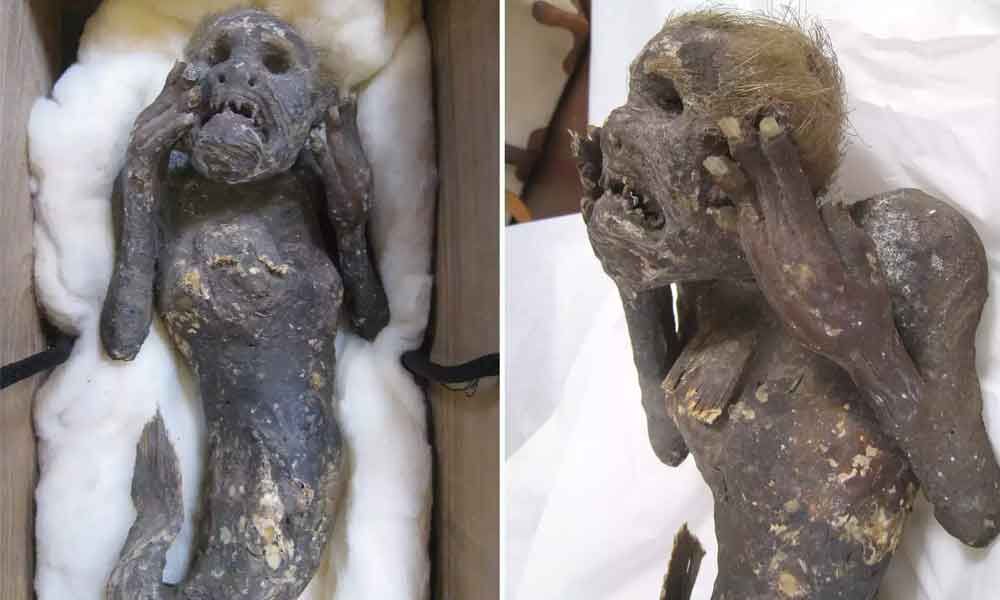Mermaids have attracted many people for centuries due to their distinctive features. A mermaid is a mythical creature with the upper part of a human and a lower part like that of a fish. Mermaids are believed to be sea goddesses and are known as Undines in Scandinavia and Sirens in ancient Greece. The question arises as to whether they are real or just made-up stories of people. There are many theories and proofs related to the existence of mermaids.

There are many myths and stories related to mermaids. One such story is that one of the earliest mermaids appeared in Syria around 1000 BC, when the moon goddess Atargatis entered a lake and assumed the shape of a fish, giving rise to one of the earliest mermaid tales. She did so in grief over the death of her lover. She was so beautiful that the local gods asked her to retain her top half as a human and not let her give up her charm. The Europeans in the Middle Ages believed that they had no soul.
One of the legends, also medieval, says that a mermaid came to a monk, and he prayed with her so that she would have a soul. She came to him several times, but in the end, the power of the sea turned out to be very strong, and she sailed away.”
Culturologist Natalya TerenkovaToggle300-Year-Old Mermaid Mummy In Japan
There is a 300-year-old mummy of a mermaid in Japan. It is about 30 centimeters long. According to folklore, it was found on the coast of the province of Tosa around 1740. It is currently kept in a Japanese temple located in Okayama Prefecture. Mermaids are called ‘ninge’ in Japanese and are considered sacred. According to Japanese mythology, ninge grants longevity.
 300-year-old mermaid mummy in Japan
300-year-old mermaid mummy in Japan
Scientists were not allowed to research the skeleton due to their divinity until recently on the condition that the mummy would be given back to the temple after the research. They examined its DNA. Alexei Kylasov, a doctor of cultural studies, stated that it was a fake. It was created using the upper part of a monkey, a fish tail, and human nails. Craftsmen have started making fake sculptures, due to which it is difficult to tell the authenticity of the stories of mermaids.
“The simplest fake is to take the top from the monkey, the bottom from the fish, skillfully sew it all, and, in fact, put it somewhere. Different options, different craftsmen, but the goal, in fact, is the same – to get fame, money.
Culturologist Natalya TerenkovaMermaid Skeleton In Denmark
There is another skeleton of a mermaid in the National Museum of Denmark. It is known as the Heraldskaer and was found by a local farmer while plowing the field. Heraldskaer left hand is missing, and its species is claimed to be Hydronymphus pesci, resembling the one kept at the Hermitage Museum in St. Petersburg, Russia, which does not have a tail.
 Mermaid Skeleton In Denmark
Mermaid Skeleton In Denmark
These species are believed to have been extinct since the end of the 17th century. According to scientists, Heraldskaer is a member of the Asian lineage of the merfolk, which accounts for the rarity of its specimens in Europe. It was first displayed in 2012 at the Danish National Museum in Copenhagen. It was about 18 years old, with long, thick hair, long, sharp fangs, and a purse filled with a flower, a mussel shell, a snake’s tail, and a shark’s tooth.
In spite of all the exclusive features, it is also fake. Lars Thomas, a Danish zoologist and cryptozoological researcher, stated that it was created by Mille Rude, a Danish artist, for an exhibition held at the Danish National Museum in Copenhagen in 2012. He was inspired by the Heraldskaer Women’s Body discovered in 1835, which is believed to be of pre-Roman Iron Age origin.
There are myths and stories related to mermaids, but the real and rather interesting question arises: from where does the portrayal of mermaids come? Scientists believe that the inspiration came from manatees and dugongs. Centuries ago, they were mistaken for mermaids. The confusion may seem absurd now, but back then, most of the sea was unexplored, and technology was not a thing.
“Manatees could be mistaken for some kind of fantastic creature because their part of the body, which is closer to the tail, is quite fishy. But such a rounded, serious head—it is, in general, something it resembles, of course, mammals that do not live in water at all.”
Kylasov, a doctor of cultural studies
Things that are unusual never fail to amaze people. Mermaids may have been a rumor started by some mischievous people, but now they have become the greatest mythological story in history.
Leave us your thoughts in the comment section.





